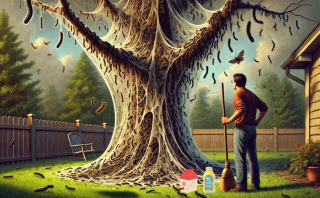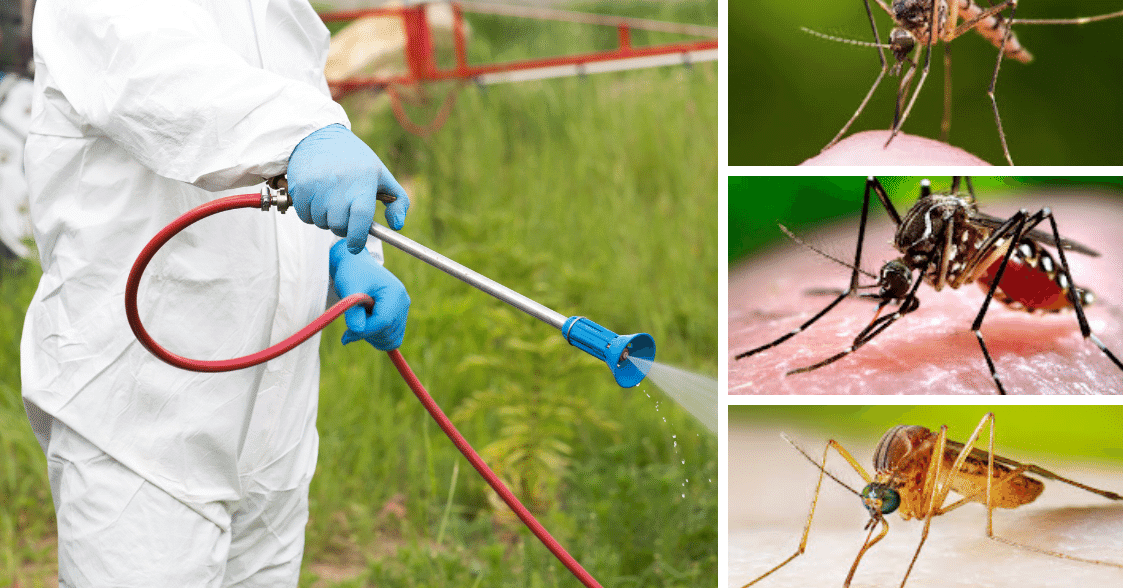Tent caterpillars, often called tent worms, are a type of caterpillar known for creating silky, web-like tents in the branches of trees. These structures serve as communal living spaces where the caterpillars shelter from predators and the elements. The most common species in North America include:
- The Eastern tent caterpillar (Malacosoma americanum).
- The Forest tent caterpillar (Malacosoma disstria).
- The Western tent caterpillar (Malacosoma californicum).
Each species has its distinct habits, but they share similar life cycles and behaviors that make them a concern for many homeowners.
Tent caterpillars emerge from eggs in the early spring, coinciding with the budding of trees. They are voracious feeders, primarily targeting deciduous trees like cherry, apple, and oak. As they mature, these caterpillars can strip significant amounts of foliage from their host trees, leaving them bare and vulnerable to other stresses.
Are Tent Caterpillars Harmful to Trees?
The short answer is yes, but the degree of harm depends on several factors, including the health of the tree, the severity of the infestation, and the species of the tree. Tent caterpillars feed on the leaves of trees, and in large numbers, they can defoliate a tree, stripping it of its leaves. While a healthy, mature tree can usually survive a single defoliation event, repeated infestations can weaken the tree over time, making it more susceptible to disease, drought, and other environmental stresses.
A tent caterpillar infestation can be particularly damaging for young trees or those already under stress from other factors. In severe cases, the tree may be unable to recover, leading to its death. Therefore, it is important to promptly address tent caterpillar infestations to protect your trees' health and longevity.
How to Get Rid of Tree Worms
Effectively managing tent caterpillars involves a combination of physical removal, targeted treatments, and preventative measures. Here’s a step-by-step guide to help you get rid of these pests and protect your trees.
1. Remove the Webs by Hand
The first step in controlling a tent caterpillar infestation is to remove the webs from your trees. This is best done early morning or late evening when the caterpillars are inside their webs. Use gloves or wrap the webs around a broomstick to avoid direct contact with the caterpillars. Gently pull the webs off the branches, ensuring that you remove as much of the webbing as possible. Once removed, the webs can be placed in a bucket of soapy water to kill the caterpillars inside.
2. Prune Affected Branches
If the infestation is localized to specific branches, consider pruning those branches to remove the caterpillars and their webs. This method is particularly effective for small trees or when dealing with early-stage infestations. Make sure to dispose of the pruned branches properly, either by burning them or placing them in a sealed plastic bag to prevent the caterpillars from spreading to other trees.
3. Use Dish Soap to Kill Tent Caterpillars
For small infestations, a simple solution of dish soap and water can effectively kill tent caterpillars. Mix a few drops of dish soap in a spray bottle filled with water and spray it directly onto the caterpillars and their webs. The soap disrupts the caterpillars’ cell membranes, leading to dehydration and death. Be sure to spray in the early morning or late evening when the caterpillars are most likely to be in their webs.
4. Introduce Natural Predators
Encouraging natural predators in your garden can help keep tent caterpillar populations in check. Birds, parasitic wasps, and predatory beetles all feed on tent caterpillars and can significantly reduce their numbers. Consider planting native plants that attract these predators or installing birdhouses to encourage birds to nest nearby.
5. Apply Bacillus thuringiensis (Bt)
Bacillus thuringiensis (Bt) is a natural bacterium that specifically targets caterpillars. It is safe for use around humans, pets, and beneficial insects, making it an ideal solution for larger infestations. Bt works by producing toxins that paralyze the caterpillars’ digestive systems, causing them to stop feeding and eventually die. Apply Bt to the affected areas in the early stages of the infestation for the best results. Follow the manufacturer’s instructions carefully to ensure proper application.
6. Use Insecticidal Soap or Horticultural Oil
Insecticidal soaps and horticultural oils can also be used to control tent caterpillars. These products work by smothering the caterpillars and disrupting their ability to feed. They are most effective when applied directly to the caterpillars or their webs. Be sure to choose a product labeled for use against tent caterpillars and follow the application instructions closely.
7. Prevent Future Infestations
Preventing future tent caterpillar infestations involves monitoring your trees regularly and taking action at the first sign of an infestation. In the fall, inspect your trees for egg masses, which appear as shiny, dark-brown bands encircling small twigs. These egg masses can be removed and destroyed before they hatch in the spring. Pruning your trees to improve air circulation and reduce overcrowding can also help deter tent caterpillars from taking up residence.
Contact Strobert Tree Services for a Free Health Assessment
Tent caterpillars can be a significant threat to the health of your trees, but with prompt action and the right approach, they can be effectively managed. At Strobert Tree Services, we understand the importance of keeping your trees healthy and thriving. Our team of certified arborists is here to help you with all your tree care needs, including the safe and effective removal of tent caterpillars.
If you’re dealing with a tent caterpillar infestation or have concerns about the health of your trees, don’t hesitate to reach out to us. We offer a free health assessment to evaluate the condition of your trees and recommend the best course of action to protect them. Contact Strobert Tree Services today to schedule your assessment and keep your trees looking their best.











